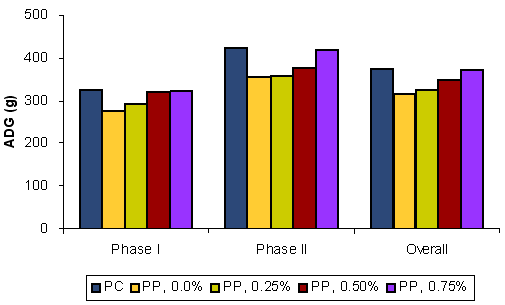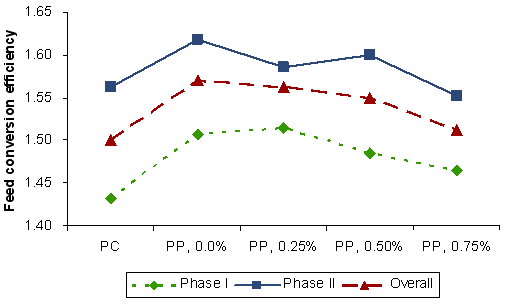Introduction
Since their discovery, antibiotics are being used in animal production to either promote growth or for treatment and prevention of infectious diseases. However, due to the potential problems like antibiotic resistance and the threat of antibiotic residues in animal products having negative influence on human health, the continued use of antibiotics as feed additives has become one of the most crucial issues in animal production. Use of antibiotics in the feed of farm animals has already been prohibited by European Union and US.
A number of research findings on the use of alternatives like botanicals, enzymes, probiotics, oligosaccharides, etc to replace antibiotics in feed have been documented. As one of the alternatives to antibiotics, recently, antimicrobial peptides (AMPs) are of interest. In this section, information about AMPs and their potential as alternatives to antibiotics in pig’s diet will be discussed. Also, the results using potato protein (obtained from tubers of potatoes (know to contain AMP) in the diet of weaning pigs will be illustrated.
What are AMPs?
The AMPs (also called host defence peptides) are small gene encoded peptides of 1 to 5 kDa that have a broad range of activity against gram-positive and gram-negative bacteria, fungi and mycobacteria (Zasloff, 2002). AMPs are natural proteins produced by all organisms and can be classified based on their amino acid composition and structure into 5 classes: 1) anionic peptides, 2) linear cationic α-helical peptides, 3) cationic peptides enriched with specific amino acids, 4) anionic and cationic peptides that contain cysteine and form disulfide bonds, and 5) anionic and cationic peptide fragments of larger proteins (Park and Hahm, 2005).
The use of AMPs is still in the stages of infancy with most of the work being conducted in-vitro and very few animal studies have been documented. Greiner et al. (2004) had fed different AMPs (lactoferrin, lactoferricin, lysozyme, neutrophil peptides and purothionin) to rats and did not notice any effect on performance in comparison to control diets. However, in their study, Greiner et al. had fed these antimicrobials for a very short duration (3 days), which may not be sufficient for the antimicrobials to elicit growth response although the AMPs exhibited antimicrobial activity in small and large intestine. Wang et al. (2007) had noticed improved growth performance, reduced intestinal pathogenic bacteria, lower diarrhea incidence and enrichment of intestinal beneficial bacteria of weaning pigs supplemented with 1 g lactoferrin /kg diet.
Effects of feeding potato protein (Solanum tuberosum L. cv. Gogu valley) on performance of weanling pigs: New potato variety developed by traditional crossing namely “Gogu valley” is known to possess 5.6kDa AMP, potamin-1 (Kim et al., 2005). In our study, the processing of potato tubers was done so as to retain the AMP (Figure 1) and the obtained potato protein had shown in–vitro antimicrobial activity (minimum inhibitory concentration in the range 300 to 500 µg/mL) against Staphylococcus aureus, Salmonella Choleraesuis, Salmonella Gallinarum and E. coli. This potato protein when added in the diets of weanling pigs at 0.25 to 0.75% linearly improved growth performance (Figure 2) and feed efficiency (Figure 3), and reduced the number of pathogenic intestinal bacteria with better results seen at higher inclusion levels (Jin et al., 2008). In addition, previous studies have demonstrated potato protein to selectively inhibit the harmful bacteria and there was no negative effect on the beneficial intestinal microflora, on the other hand antibiotics inhibit the growth of both beneficial and pathogenic microbes. The better performance of pigs fed with potato protein was due to improved nutrient digestibility and reduction of harmful bacteria.

Figure 1. The pattern of SDS-PAGE of potato protein obtained from tubers of Gogu valley potato tubers (M: Protein Marker; 1: Potato Protein).

Figure 2: Effect of Gogu valley potato protein on the ADG of weanling pigs (PC: positive control, fed diet containing antibiotic; PP: fed diets devoid of antibiotic added with 0.0, 0.25, 0.50 and 0.75% potato protein)

Figure 3: Effect of Gogu valley potato protein on the feed conversion efficiency in weanling pigs (PC: positive control, fed diet containing antibiotic; PP: fed diets devoid of antibiotic added with 0.0, 0.25, 0.50 and 0.75% potato protein)
The AMPs probably interact with the cell membrane of target bacteria resulting in their disruption or they interfere with the biosynthetic pathways of the microbes. These AMP may also enhance the cellular and humoral immune responses and are found to be chemotactic for monocytes, T lymphocytes and dendritic cells. The proteinaceous nature of AMPs makes them susceptible to degradation by proteolytic enzymes; however the chemical modification of these peptides to make them more resistant to proteolysis or encapsulation might protect the peptides from enzymatic degradation.
Another aspect to be considered is the cost of production, as chemical synthesis is costly. In future biological production using microorganisms, tissue culture, transgenic animals or plants might probably be attempted for the economic production of AMPs. Also the dose at which such peptides can be used to replace antibiotics in the diet of pigs needs to be determined. Lastly the development of microbial strains resistant to AMPs is still not known, although some studies have shown that certain genes may confer resistance to AMPs and studies are been conducted to determine whether such genes can be transferred between bacteria.



